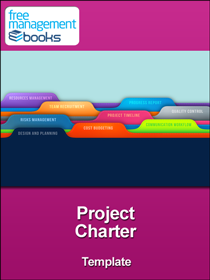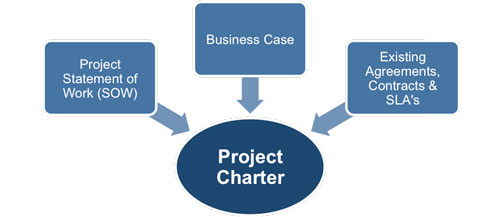
Project Charter Template
This project charter template enables you to accurately record all the necessary details in one document to formally announce the existence and commencement of a project.
This document will be completed by the sponsor or individual initiating the project. The project name is usually shortened or abbreviated into a working title for ease of communication.
What Should be Included?
There are several key sections that you need to include in your project charter. They are:
Contact points for key individuals of the project.
Project Purpose – the issue/problem to be solved by the project.
Business Objectives for the project as they relate to the organizations strategic plan.
Assumptions that have been made as part of the project.
Description of the project.
Definition of the project scope and the limits identified.
Overview of major milestones and deliverables for the project.
Project Authority – including an organization chart and definition of roles and responsibilities.
Resources required for the project including costings, equipment. staffing, support, operational & IT facilities,
Signatures of the key project members that authorize the project.
What Questions Should it Answer?
The project charter is a document that formally authorizes a project or a phase and specifies initial requirements that satisfy the stakeholder’s needs and expectations. It should answer the following questions:
1) What is the project going to do?
2) What is the business case for doing it?
3) Who wants it done?
4) Where is the money coming from?
5) Who is going to manage the work?
6) Who is going to do the work?
Which Project Documents Can be Used as Inputs?
There are two key documents that form the backbone of the project charter. They are the project statement of work (SOW), the business case and any existing agreements. The SOW is a description of business needs in terms of product, or service requirements and the business case justifies the cost and establishes boundaries for the project. Agreements may include contracts, service level agreements (SLA), other contracts that will affect the scope and functionality of the final deliverables.

Project Charter Template
For external projects, the statement of work can be received from the customer as part of a bid document, for example, request for proposal, request for information, request for bid, or as part of a contract. For internal projects, the project initiator or sponsor provides the statement of work based on business needs, product, or service requirements.
The SOW references the business need, the product scope description and the organization’s strategic plan. The business need may be as a result of an identified business opportunity, new legislation or some other factor. The product scope definition describes what the project is going to achieve in terms that are related to the business need. Finally, the project should be aligned with the organization’s strategic goals as detailed in the strategic plan.
The business case is created as a result of one or more of the following: market demand, organizational need, customer request, technological advance, legal requirement, ecological impacts or social need. It provides the necessary information from a business standpoint to determine whether or not the project is worth the required investment.
If the project is being done on the basis of a contract then obviously this will be a major input. If the contract has not been formalized there will usually still be a ‘heads of agreement’, that is a non-binding document outlining the main issues relevant to the potential agreement.
Who is Responsible for Creating it?
The project initiator or sponsor will either create the project charter themselves or delegate that task to the project manager. In either case, it needs to be done before planning starts.
To start writing your project charter you will need to perform certain tasks which enable you to:
1) Identify the high-level requirements
2) Define and agree the high-level project scope
3) Identify the project or stage objectives
4) Define the project success criteria
5) Identify and define any obvious project milestones
6) Define the approximate budget
7) Ensure that the project is aligned with the organizations strategic goals
This exercise may prove to be straightforward, in the case of a simple project or it may be a lengthy and convoluted one if the project is large or complex. In multiphase projects, this process is used to validate or refine the decisions made during the previous iteration.
Whether the project is a complex or simplistic one it will require the author of the project charter to seek out subject matter experts to help compile the necessary data for this document. This information will be acquired through a variety of group activities, meetings, group discussions and exchange of ideas. All this data will then have to fitted into the guidelines and culture of the organization, including all their proprietary procedures, processes and policies.
